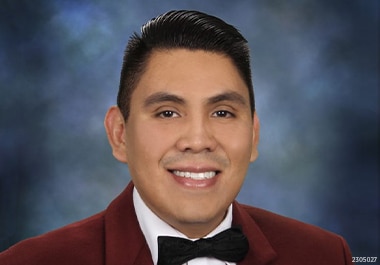Impacting Community through Community
Smoking is the leading preventable cause of cancer (1). On May 31st, World No Tobacco Day, smokers all over the world will be asked to quit for at least 24 hours. In the United States, three out of five smokers have tried to quit at some point in their lives. Yet disparities in cessation behavior (i.e., making a past-year quit attempt and achieving recent successful cessation) have been observed across certain population subgroups, including those defined by race/ethnicity (2). A growing share of US adult smokers – Hispanic/Latino adults – have been found to be less likely to receive advice to quit and use proven cessation treatments than non-Hispanic white adults (3).

2021 AACR-Genentech Cancer Disparities Fellow Francisco Cartujano, MD, seeks to address tobacco-related disparities in Latinos by promoting smoking cessation and physical activity using a mobile intervention called Deja de fumar, ¡ejercitándote! (Quit Smoking by Exercising!). In a recent article published in the International Journal of Environmental Research and Public Health, he shared that although Latino smokers appreciated the multiple benefits of increasing physical activity (including its role in smoking cessation), they encountered barriers such as lack of social support and low financial resources (4).
In this study, Dr. Cartujano and his team conducted semi-structured interviews bsaed on the Health Belief Model in English or Spanish with Latino adult smokers (n=20). This model is based on the principle that people change their health behaviors based on the following: their perceptions of the benefits, including their susceptibility to a certain disease/condition; their assessment of the obstacles; their confidence in their ability to change; and the availability of cues to action that are relevant to them.
Seventy percent of the Latino smokers who were interviewed were cognizant of the role of physical activity in smoking cessation, but a similar percentage of the interviewees shared that lack of time due to work was a barrier to increasing physical activity. Half of the participants attributed their inactivity to the health effects of smoking and that being outdoors encouraged them to be active. In a recent interview conducted at the 2023 AACR Annual Meeting, Dr. Cartujano added that for these participants, “probably going to a gym that can be pricey is not their ideal scenario for being physically active, but maybe something that engages the family, something that that they can do within their daily context, is something that they are willing to do.”
In acknowledging the impact of the AACR grant on his work, Dr. Cartujano emphasized, “I am extremely honored to receive funding from the American Association for Cancer Research. I believe that we are advancing science in our field through this funding, and it is very important to do interventions that are comprehensive. He pointed out, “It’s not only me. It’s all the community partners that work with me and all of my mentors. We are extremely pleased with the funding that we receive.”
He added, “We have convened a community advisory board that has been working with us for the past ten years, and they represent multiple sectors. By working with them, we have been able to advance our research. I would have never guessed that I would do a study on physical activity, but it was because of the community advisory board. And when we presented the results of the recently completed randomized controlled trial where we found that 75% of the participants did not engage in physical activity, they were the ones who asked us: are you going to do something about it?”
References:
- American Association for Cancer Research (AACR). (2022). AACR Cancer Disparities Progress Report 2022
- U.S. Department of Health and Human Services. Smoking Cessation. A Report of the Surgeon General. Atlanta, GA: U.S. Department of Health and Human Services, Centers for Disease Control and Prevention, National Center for Chronic Disease Prevention and Health Promotion, Office on Smoking and Health, 2020.
- Babb S, Malarcher A, Asman K, Johns M, Caraballo R, VanFrank B, et al. Prev Chronic Dis 2020; 17: E10
- Hernández-Torres R, Alaniz-Cantu E, Rojas MVB, Lara D, Merritt S, DeJesus E, et al. Int. J. Environ. Res. Public Health 2023; 20: 3128.